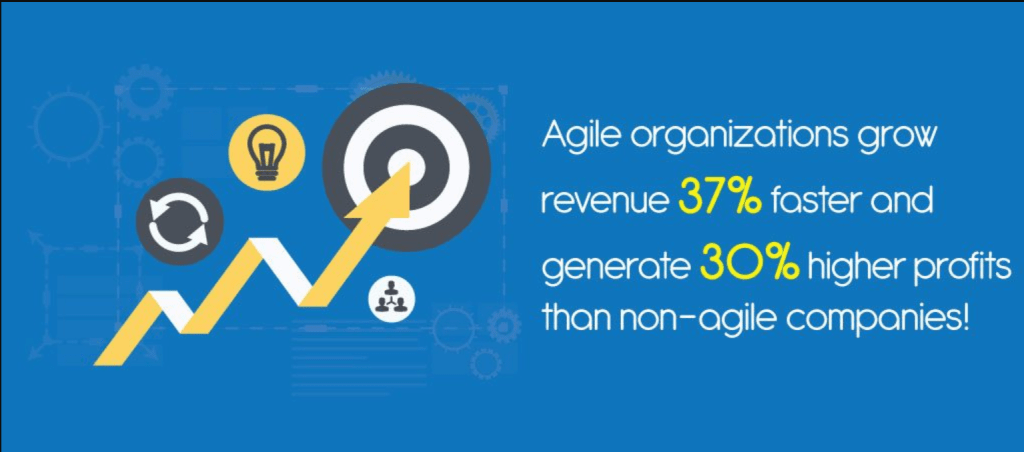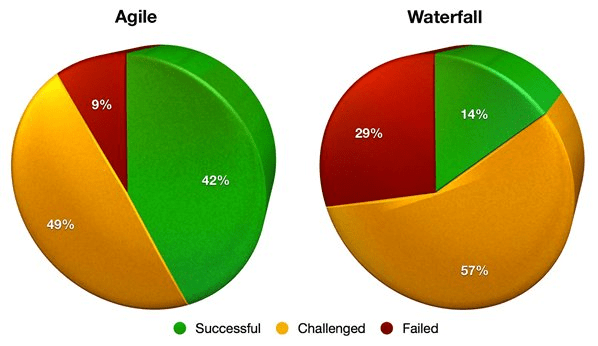Measuring Agile through smiles and discussions
Corporates are no more discussing benefits of Agile over antique Waterfall models and contemplating if they should go Agile. Industries in diverse sectors have adopted Agile for the following factors highlighted below:
-Increased efficiency
-Better time to market
-Decreased costs and increased revenue for more than a decade.
Note:
However, most companies understand Agile only as daily scrum meetings, smaller teams, etc. They miss that Agile is all about flat hierarchy and employee empowerment, without which Agile will lose its true meaning.
At times like these when offices have stepped into our homes it is natural to think about applying philosophies in a domestic system to our work at office. Not just our work, our kid’s classes have moved online. According to some reports kids who spent less time attending classes and attended interactive ones learnt in bite sized pieces and almost the same amount as kids who attended classes for whole school hours. They showed consistent interest without a burnout. In art classes students performed better and worked consistently when they didn’t compare their results with others and when they competed only with their past efforts and results.
This is new to us since we were asked to compete with each other in our schools. We needed a mindset change to fit into non-competitive Agile and enjoy it’s benefits. Though unwittingly, some of us carry the same old school principles of changing deadlines as per customers’ demands, following up and intruding in a team’s work etc. These work against the spirit of Agile and take away benefits of the methodology

Here are some parameters to consider while measuring Agile Benefits.
Velocity:
If the team develops features of a product faster, then it means they’re giving better output at the same cost. This metric can be measured per story point delivered and gives you a direct view of how the Agile transformation is impacting your bottom line or ROI.
Happiness Index:
It’s important to check how happy the employees are in the work they do. Of course, it is their job and happiness is elusive. They cannot be happy every day and every moment. Probably measure their unhappiness index then. If they’re not overburdened or don’t have any reasons to be unhappy then they are happy enough to translate their work to customers happiness. Happiness is the state of creative teams, and unhappiness of command-and-control groups
Net Promotor Score:
At the end of the day, what matters is whether customers will recommend your company’s products or services. Though a difficult metric to game, it shows clearly how much our customer’s value us.
Cost per Call:
If you have a consumer facing product or any product that has a helpdesk, you should be lowering your cost per call and reducing the number of calls to your helpdesk because by going Agile, you should be able to make better and higher quality software with fewer defects, better usability, that results in fewer problems to report.
Team connectivity:
Many didn’t consider this point prior to the pandemic. But now, when everyone is working from home how close the team members are to each other and how effectively is technology helping connect with each other is as important a metric as any of the above ones.
How open is everyone to questions?:
If the team still receives or expects to receive orders or is uncomfortable when posed with a question or to question, they need to go through learning Agile principles again. No doubt Socrates would’ve loved Agile
Conclusion
Agile is beyond scrum calls and daily standup meetings in glass walled rooms sprinkled with fluorescent post-it notes. The philosophy of Agile, that is, empowered teams, flat hierarchies, closely following market realities, ensuring clear customer communications are at the heart of being Agile without which the essential methodology would become hollow and will not give the returns we expect.
Achieving better business results from Agile isn’t always easy.
-Our study highlights just over half of the companies surveyed have achieved the desired business outcomes — from higher market share to lower costs — from their Agile projects.
-That’s a large number, but it also shows that there is a long way forward. An organisation’s Agile strategy must constantly evolve and keep up with its changing priorities.
-To get the most from Agile, companies need to rethink their approach and adopt some of the below mentioned best practices to maximize their business benefits.
Build on customer insights:

Understanding the customer is critical. Firms need to gain immediate feedback on how a product or service is used. They can start by including the customer in the design process early on, before committing to a design. Ultimately, providing time and cost savings to the organization.
Add Comment
You must be logged in to post a comment.







